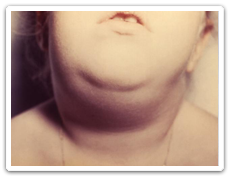Mumps
 Mumps is an infectious disease caused by the mumps virus. It is best known for the swollen, painful cheeks and neck that it may cause.
Mumps is an infectious disease caused by the mumps virus. It is best known for the swollen, painful cheeks and neck that it may cause.
It is spread mainly through respiratory droplets in the air produced when an infected person coughs or sneezes.
Infection can lead to serious illness.
Image Content Provider: CDC Public Health Image Library
Symptoms
Symptoms generally occur between 12 to 25 days after infection and resolve three to ten days after onset of illness. The most common are fever and swollen cheeks and neck. Swollen cheeks and neck are due to swollen glands, usually under the ears or jaw on one or both sides of the face.
Approximately 20 per cent of those infected with mumps will not show any symptoms. Nearly half of those infected have mainly respiratory symptoms.
Causes
Mumps is caused by the mumps virus, which is spread through respiratory droplets in the air formed when coughing or sneezing and through the sharing of food or drinks. You can also catch it by touching an item that was previously touched by an infected person and then touching your eyes or mouth.
Treatment
There is currently no cure for mumps. Current treatment focuses on relieving the symptoms.
Prevention
Mumps can be prevented through immunization. Manitoba has a provincial immunization program, which provides free, publicly-funded vaccines to those who are eligible.
The average incubation period for mumps, which is the time from exposure to when the appearance of symptoms occurs, is 16-18 days with a range of 12-25 days.
A person is infectious from seven days before to 5 days after the onset of swollen glands. Maximum infectiousness occurs 2 days before symptoms until 5 days after. A person with no symptoms can transmit infection.
Other precautions can be taken, including practicing good hand hygiene, covering your mouth with a tissue or your shirt sleeve when you cough or sneeze, and avoiding sharing of personal items.
Most people who have mumps will be protected (immune) from getting mumps again. There is a small percent of people though, who could get re-infected with mumps and have a milder illness.
Manitoba Health Resources
For the Public
- Mumps Letter to Post-Secondary Schools
 NEW
NEW
(October 19, 2017) - Mumps Letter to Schools and Daycares
 NEW
NEW
(October 19, 2017) - Mumps Disease Fact Sheet

(May 2017) - Mumps Letter to Schools and Daycares

(February 24, 2017) - Measles, Mumps and Rubella (MMR) Vaccine Factsheet
(May 2017) - Public Health Update: Mumps in Manitoba (Media Bulletin)
(December 9, 2016) - Measles, Mumps, Rubella and Varicella (MMRV) Vaccine Factsheet

(December 2016) - Mumps Letter to Sports Organizations (December 22, 2016)

(December 22, 2016) - Public Health Update: Nine Cases of Mumps in Manitoba (Media Bulletin)
(October 20, 2016)
For Health Care Providers
- Mumps Protocol
 REVISED
REVISED
(July 2010 with November 2015 and April 2017 updates) - Mumps Case Investigation Form
 NEW
NEW - Immunization Program Manual for Immunization Providers in Manitoba
- Update: Mumps Outbreak and Testing Processes
 NEW
NEW
(April 26, 2017) - Update: Re: Mumps Reporting and Case Investigation

(February 2, 2017) - Health Care Provider Letter Re: Mumps Reporting and Case Investigation

(October 20, 2016) - Routine Practices and Additional Precautions: Preventing the Transmission of Infection in Health Care

Other Resources
- Public Health Agency of Canada – What you need to know about mumps
- HealthLinkBC – Mumps Topic Overview
Communicable Disease
Control (CDC) Health Links – Info Santé |


